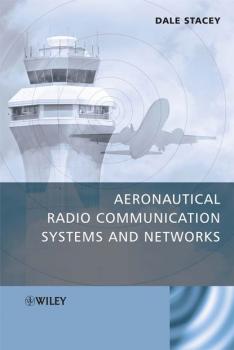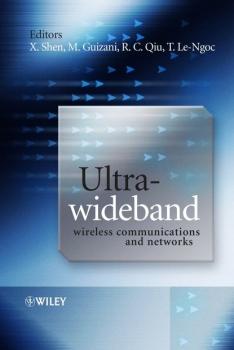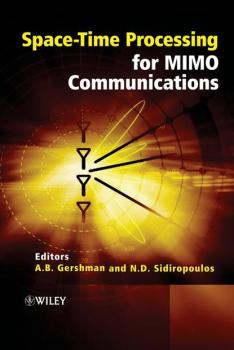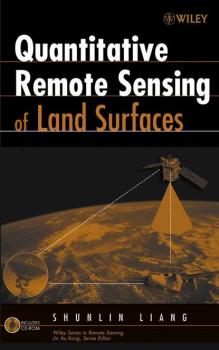ТОП просматриваемых книг сайта:
Техническая литература
Различные книги в жанре Техническая литература, доступные для чтения и скачиванияАннотация
Typically, there are over twenty radio systems on board the average commercial jet aircraft dealing with communication, navigation and surveillance functions. Very high frequency (VHF) air-to-ground communication is usually the main method of information and control exchange between pilot and air traffic control. Satellite and high frequency radio links are used to complement this system for long range or oceanic information exchanges. Other communications systems are required between the airline operation centre and the pilot and sometimes between the passengers and the ground. A comprehensive guide to current systems, networks and topologies, this book covers application requirements for communication and related radio-navigation and surveillance functions in aeronautical systems. There is also an insight into future possibilities as technologies progress and airspace operation and control scenarios change. Ideal for civil aviation authorities, airspace management providers and regulatory organizations, Aeronautical Radio Communication Systems and Networks will also appeal to aircraft and radio equipment manufacturers and university students studying aeronautical or electronic engineering. Key features: Provides a broad and concise look at the various communications systems on board a typical aircraft from a theoretical, system level and practical standpoint with worked examples and case studies throughout. Considers all types of aircraft from light aircraft to large commercial jets and specialised supersonic aircraft. Looks at existing airport radio communication infrastructure and proposals for new very high bandwidth radio applications within the airport environment. Provides a complete list of formulae for engineering design analysis and quick checks on system performance or interference analysis.
Аннотация
Transport networks evolved from DCS (Digital Cross-connect Systems)-based mesh architectures, to SONET/SDH (Synchronous Optical Networking/Synchronous Digital Hierarchy) ring architectures in the 1990’s. In the past few years, technological advancements in optical transport switches have allowed service providers to support the same fast recovery in mesh networks previously available in ring networks while achieving better capacity efficiency and resulting in lower capital cost. Optical transport networks today not only provide trunking capacity to higher-layer networks, such as inter-router connectivity in an IP-centric infrastructure, but also support efficient routing and fast failure recovery of high-bandwidth services. This is possible due to the emergence of optical network elements that have the intelligence required to efficiently control the network. Optical mesh networks will enable a variety of dynamic services such as bandwidth-on-demand, Just-In-Time bandwidth, bandwidth scheduling, bandwidth brokering, and optical virtual private networks that open up new opportunities for service providers and their customers alike. Path Routing in Mesh Optical Networks combines both theoretical as well as practical aspects of routing and dimensioning for mesh optical networks. All authors have worked as technical leaders for the equipment vendor Tellium who implemented such capabilities in its product, and whose product was deployed in service provider networks. Path Routing in Mesh Optical Networks Presents an in-depth treatment of a specific class of optical networks, i.e. path-oriented mesh optical networks. Focuses on routing and recovery, dimensioning, performance analysis and availability in mesh optical networks. Explains and analyses routing specifically associated with Dedicated Backup Path Protection (DBPP) and Shared Backup Path Protection (SBPP) recovery architectures. As most of the core backbone networks evolve to mesh topologies utilizing intelligent network elements for provisioning and recovery of services, Path Routing in Mesh Optical Networks will be an invaluable tool for both researchers and engineers in the industry who are responsible for designing, developing, deploying and maintaining mesh optical networks. It will also be a useful reference book for graduate students and university professors who are interested in optical networks or telecommunications networking. With a foreword by Professor Wayne D. Grover, author of the book Mesh-Based Survivable Networks.
Аннотация
Radio Network Planning and Optimisation for UMTS, Second Edition, is a comprehensive and fully updated introduction to WCDMA radio access technology used in UMTS, featuring new content on key developments. Written by leading experts at Nokia, the first edition quickly established itself as a best-selling and highly respected book on how to dimension, plan and optimise UMTS networks. This valuable text examines current and future radio network management issues and their impact on network performance as well as the relevant capacity and coverage enhancement methods. In addition to coverage of WCDMA radio access technology used in UMTS, and the planning and optimisation of such a system, the service control and management concept in WCDMA and GPRS networks are also introduced. This is an excellent source of information for those considering future cellular networks where Quality of Service (QoS) is of paramount importance. Key features of the Second Edition include: High-Speed Downlink Packet Access (HSDPA) – physical layer, dimensioning and radio resource management Quality of Service (QoS) mechanisms in network for service differentiation Multiple Input – Multiple Output (MIMO) technology Practical network optimisation examples Service optimisation for UMTS and GPRS/EDGE capacity optimisation The ‘hot topic’ of service control and management in WCDMA and GPRS networks, that has evolved since the first edition Companion website includes: Figures Static radio network simulator implemented in MATLAB® This text will have instant appeal to wireless operators and network and terminal manufacturers. It will also be essential reading for undergraduate and postgraduate students, frequency regulation bodies and all those interested in radio network planning and optimisation, particularly RF network systems engineering professionals.
Аннотация
Fast and Efficient Context-Aware Services gives a thorough explanation of the state-of-the-art in Context-Aware-Services (CAS). The authors describe all major terms and components of CAS, defining context and discussing the requirements of context-aware applications and their use in 3rd generation services. The text covers the service creation problem as well as the network technology alternatives to support these services and discusses active and programmable networks in detail. It gives an insight into the practical approach followed in the CONTEXT project, supplying concrete guidelines for building successful context-aware services. Fast and Efficient Context-Aware Services: * Provides comprehensive and in-depth information on state-of-the-art CAS technology. * Proposes a system architecture for CAS creation and delivery, discussing service management and active network layers. * Describes the service lifecycle functional architecture, covering service authoring, customization, invocation, and assurance. * Explains system design considerations and details, system evaluation criteria, test-bed requirements, and evaluation results. Fast and Efficient Context-Aware Services is an invaluable resource for telecommunications developers, researchers in academia and industry, advanced students in Computer Science and Electrical Engineering, telecoms operators, as well as telecommunication management and operator personnel.
Аннотация
Learn about Ultra-wideband (UWB) transmission – the most talked about application in wireless communications. UWB wireless communication is a revolutionary technology for transmitting large amounts of digital data over a wide spectrum of frequency bands with very low power for a short distance. This exciting new text covers the fundamental aspects of UWB wireless communications systems for short-range communications. It also focuses on more advanced information about networks and applications. Chapters include: Radio Propagation and Large Scale Variations, Pulse Propagation and Channel Modelling, MIMO (Multiple Input, Multiple Output) RF Subsystems and Ad Hoc Networks. Focuses on UWB wireless communications rather than UWB radar, which has been covered before. Provides long and short-term academic and technological value. Teaches readers the fundamentals, challenges and up-to-date technical processes in this field.
Аннотация
Next Generation Wireless Systems and Networks offers an expert view of cutting edge Beyond 3rd Generation (B3G) wireless applications. This self-contained reference combines the basics of wireless communications, such as 3G wireless standards, spread spectrum and CDMA systems, with a more advanced level research-oriented approach to B3G communications, eliminating the need to refer to other material. This book will provide readers with the most up-to-date technological developments in wireless communication systems/networks and introduces the major 3G standards, such as W-CDMA, CDMA2000 and TD-SCDMA. It also includes a focus on cognitive radio technology and 3GPP E-UTRA technology; areas which have not been well covered elsewhere. Covers many hot topics in the area of next generation wireless from the authors’ own research, including: Bluetooth, all-IP wireless networking, power-efficient and bandwidth-efficient air-link technologies, and multi-user signal processing in B3G wireless Clear, step-by-step progression throughout the book will provide the reader with a thorough grounding in the basic topics before moving on to more advanced material Addresses various important topics on wireless communication systems and networks that have emerged only very recently, such as Super-3G technology, 4G wireless, UWB, OFDMA and MIMO Includes a wealth of explanatory tables and illustrations This essential reference will prove invaluable to senior undergraduate and postgraduate students, academics and researchers. It will also be of interest to telecommunications engineers wishing to further their knowledge in this field.
Аннотация
The key feature of future mobile communication systems is the ability to deliver wideband and high bit-rate multimedia services alongside the traditional radio services such as voice, messaging and slow rate data. The broad range of services expected to be supported can be divided into different Quality of Service (QoS) classes. However, the provision of such mobile multimedia services under QoS guarantees will not be possible without a utilization of the air interface resources by means of Radio Resource Management (RRM) strategies that ensure the target QoS, the planned coverage area and that offer a high system capacity. Under this framework, the book focuses on the RRM concepts, including the theoretical background that serves as a basis for the description of specific RRM algorithms. The RRM problem for UMTS is presented, and more specifically, for the FDD mode, which is based on a WCDMA scheme. More specifically, the different aspects that are covered include: Introduces the mobile communications sector and UMTS, including the evolution towards 4G systems, with an overview of the QoS concept which is key for the definition of RRM strategies Offers a detailed description of the radio interface in UMTS, as the basis for the implementation of RRM strategies Provides the fundamental concepts related with the development of RRM strategies in WCDMA networks Analyses particular RRM algorithms in a variety of scenarios, trying to identify the key parameters and factors that influence their performance Explores the evolution of UMTS towards Beyond 3G systems and the concept of Common RRM in heterogeneous networks with the aid of some algorithm examples This comprehensive title is essential reading for engineers and managers in radio engineering departments of UMTS network operators and UMTS equipment manufacturers. It will also prove insightful to researchers in the field of 3G and Beyond 3G systems and academics in any of these areas.
Аннотация
Theory and Applications of OFDM and CDMA is an ideal foundation textbook for those seeking a sound knowledge of this fast-developing field of wideband communications. The advanced transmission techniques of OFDM, applied in wireless LANs and in digital and video broadcasting, and CDMA, the foundation of 3G mobile communications, have been part of almost every communication system that has been designed in recent years, with both offering a high degree of flexibility in adjusting the system to the requirements of the application and to the impairments caused by the transmission channel. Starting from the basics of digital transmission theory, the reader gains a comprehensive overview of the underlying ideas of these techniques and their strengths and weaknesses under various conditions. In this context, the specific requirements of the mobile radio channel and their relevance for the design of digital transmission systems are discussed and related to the items of channel coding and modulation. Clear explanation of the basics of digital communications, mobile radio channels, coding and modulation, OFDM as a multicarrier system and CDMA as an application of spread spectrum techniques Discusses the most important mobile radio and digital broadcasting systems that use OFDM and CDMA, and explains in detail the underlying ideas for the choice of system parameters Progresses from the fundamentals of wideband communication through to modern applications Includes a Companion Website featuring a solutions manual, electronic versions of the figures and other useful resources This volume will be an invaluable resource to advanced undergraduate students and first/second year postgraduates of electrical and engineering and telecommunications. It will also appeal to practising engineers, researchers and those in academia who wish to expand their knowledge on modern aspects of digital communications and systems in a mobile radio environment.
Аннотация
Driven by the desire to boost the quality of service of wireless systems closer to that afforded by wireline systems, space-time processing for multiple-input multiple-output (MIMO) wireless communications research has drawn remarkable interest in recent years. Exciting theoretical advances have been complemented by rapid transition of research results to industry products and services, thus creating a vibrant new area. Space-time processing is a broad area, owing in part to the underlying convergence of information theory, communications and signal processing research that brought it to fruition. This book presents a balanced and timely introduction to space-time processing for MIMO communications, including highlights of emerging trends, such as spatial multiplexing and joint transceiver optimization. Includes detailed coverage of wireless channel sounding, modelling, characterization and model validation. Provides state-of-the-art research results on space-time coding, including comprehensive tutorial coverage of orthogonal space-time block codes. Discusses important recent developments in spatial multiplexing, transmit beam-forming, pre-coding and joint transceiver design for the multi-user MIMO downlink using full or partial CSI. Illustrates all theory with numerous examples gleaned from cutting-edge research from around the globe. This valuable resource will appeal to engineers, developers and consultants involved in the design and implementation of space-time processing for MIMO communications. Its accessible format, amply illustrated with real world case studies, contains relevant, detailed advice for postgraduate students and researchers specializing in this field.
Аннотация
Processing the vast amounts of data on the Earth's land surface environment generated by NASA's and other international satellite programs is a significant challenge. Filling a gap between the theoretical, physically-based modelling and specific applications, this in-depth study presents practical quantitative algorithms for estimating various land surface variables from remotely sensed observations. A concise review of the basic principles of optical remote sensing as well as practical algorithms for estimating land surface variables quantitatively from remotely sensed observations. Emphasizes both the basic principles of optical remote sensing and practical algorithms for estimating land surface variables quantitatively from remotely sensed observations Presents the current physical understanding of remote sensing as a system with a focus on radiative transfer modelling of the atmosphere, canopy, soil and snow Gathers the state of the art quantitative algorithms for sensor calibration, atmospheric and topographic correction, estimation of a variety of biophysical and geoph ysical variables, and four-dimensional data assimilation










